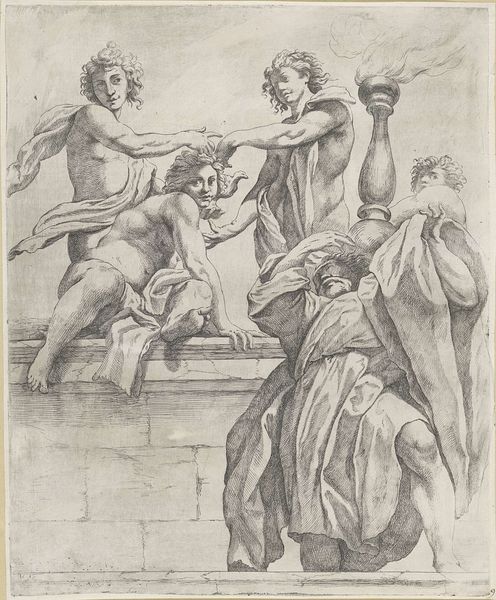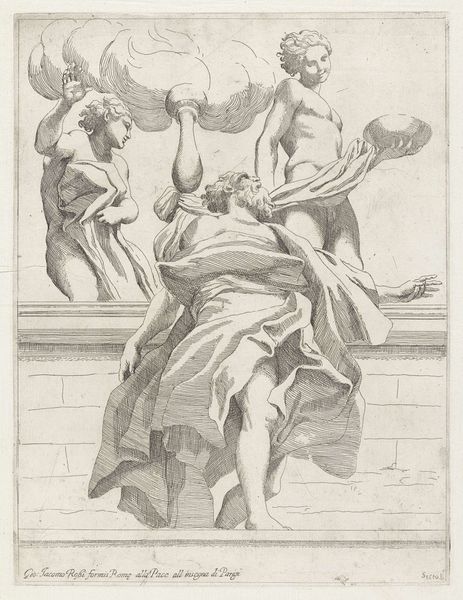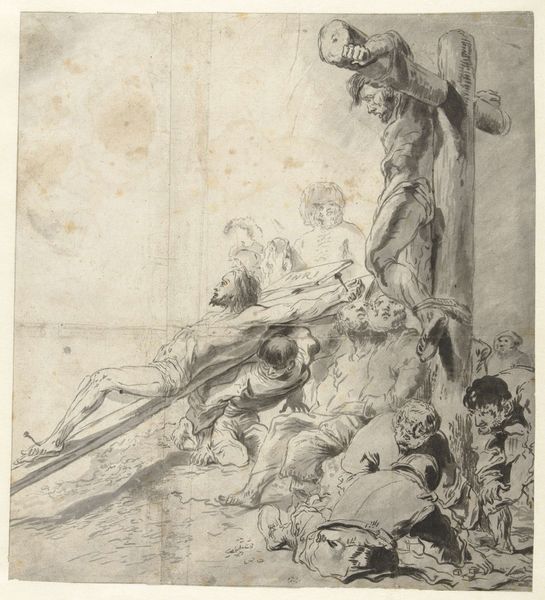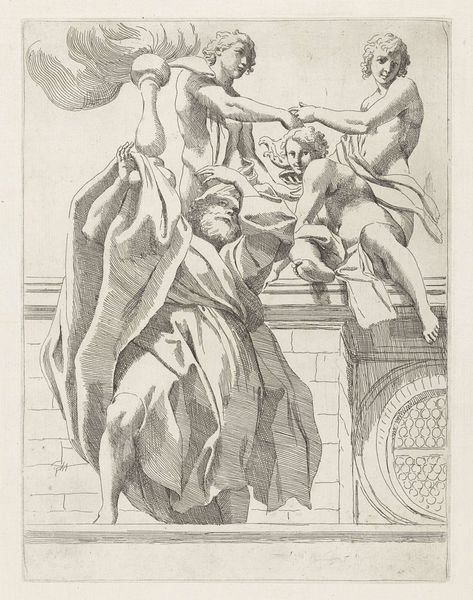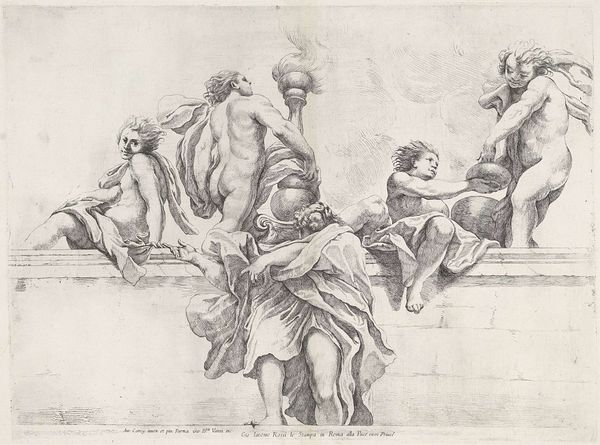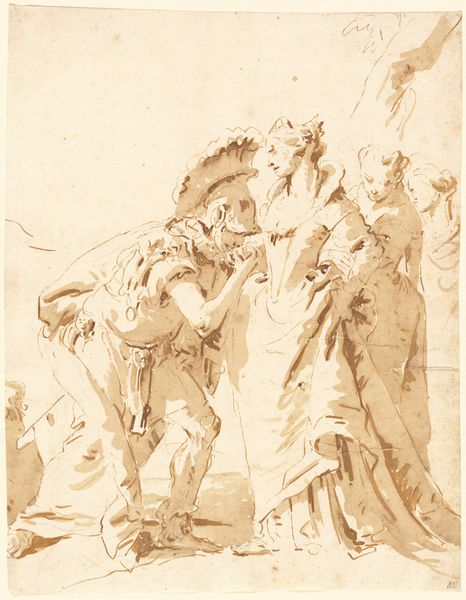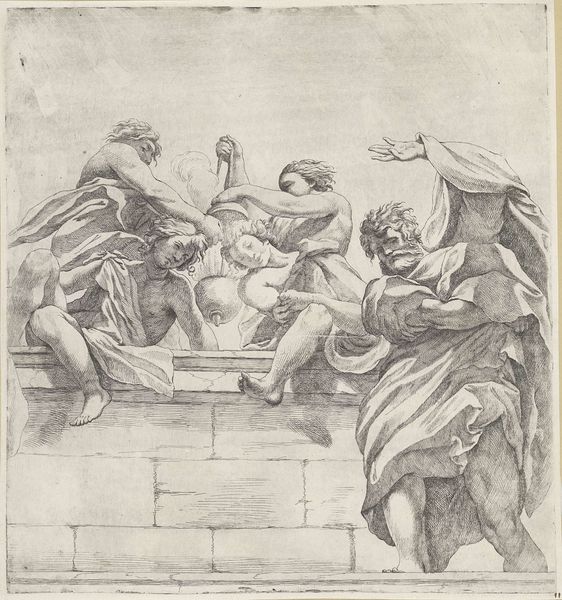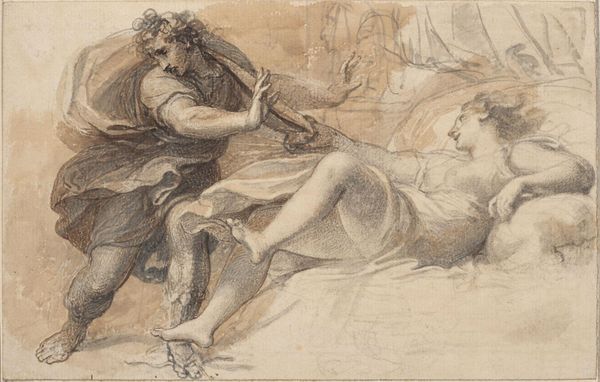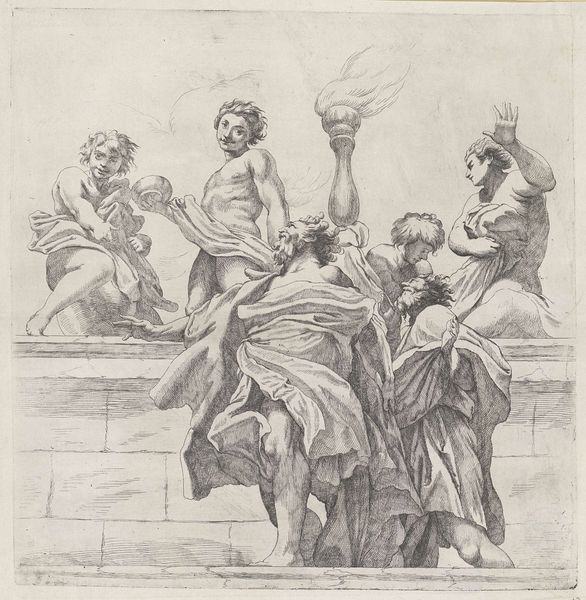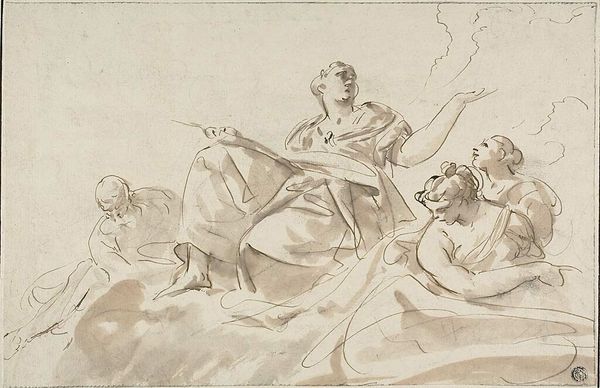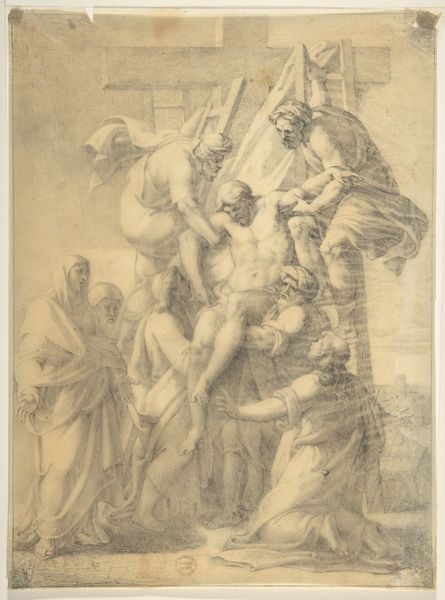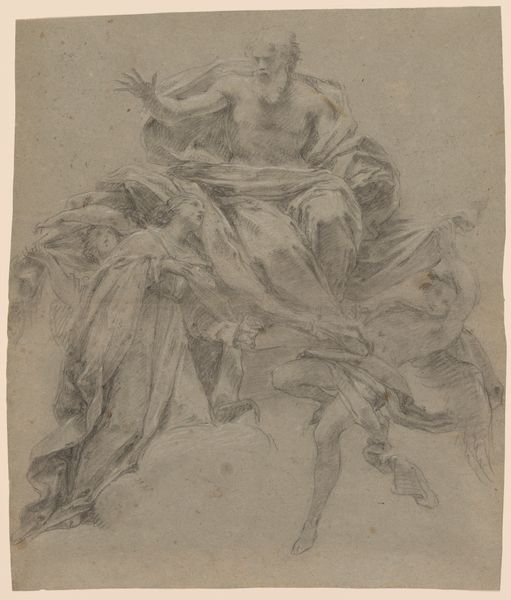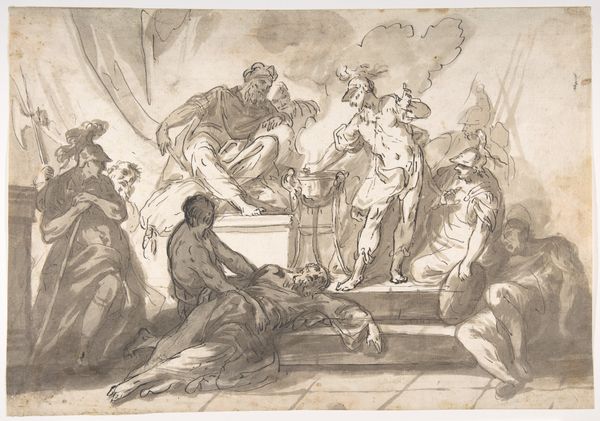
print, engraving
#
baroque
# print
#
figuration
#
history-painting
#
engraving
Dimensions: height 375 mm, width 315 mm
Copyright: Rijks Museum: Open Domain
Curator: Let's turn our attention to this print, "Apostle and Three Angels" by Giovanni Battista Vanni, dating from sometime between 1609 and 1660. It is a fascinating engraving. Editor: It really is! The composition is quite striking, a rather complex arrangement of figures clustered together. It has a very theatrical feel to it. What compositional elements stand out to you in this print? Curator: The dynamism certainly commands attention. Note how Vanni manipulates line and form to guide the eye. The flame atop the torch acts as a visual high point, creating a sort of vortex of energy with the figures positioned asymmetrically around this. Notice, too, how the robust lines which give definition to the apostle, whose robes billow about him, diminish and almost vaporise as our eye traces the ascending torch and supporting figures. Are you struck by a sense of disproportion, or compression in the composition? Editor: Absolutely, I noticed that as well. There seems to be an exaggeration of musculature, an almost hyperbolic rendering of the human form. And that brings up a question; the Apostle seems almost burdened, with that heavy torch. Curator: Precisely! How would you suggest that Vanni’s exaggerated line-work is attempting to construct not simply a realistic depiction, but also something ideational? The composition compels a certain interpretation of heaviness through line, light, and disproportion, does it not? Editor: That’s a helpful way of considering it, rather than viewing the distortions as errors, instead considering their aesthetic and expressive purpose. I see your point! Thanks for sharing your expertise! Curator: My pleasure. Analyzing the composition in such a manner also reveals the construction of artistic intention, don’t you agree?
Comments
No comments
Be the first to comment and join the conversation on the ultimate creative platform.
